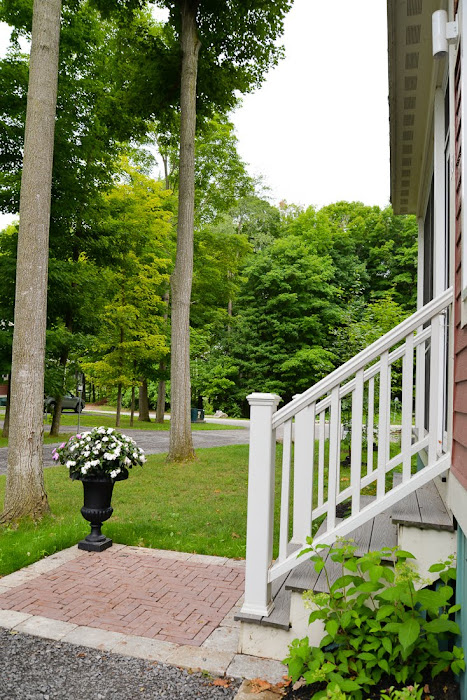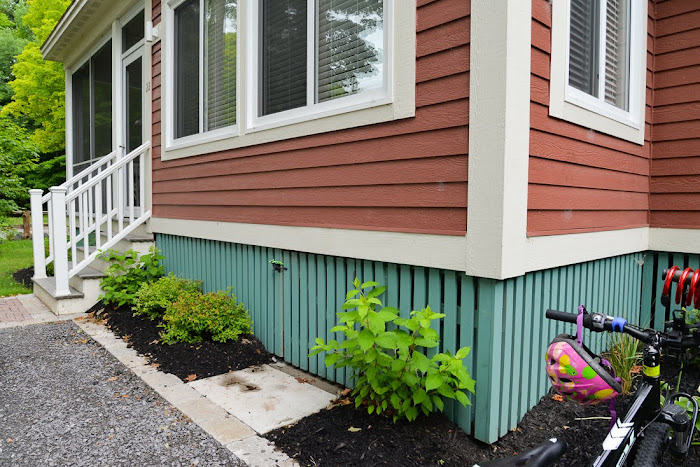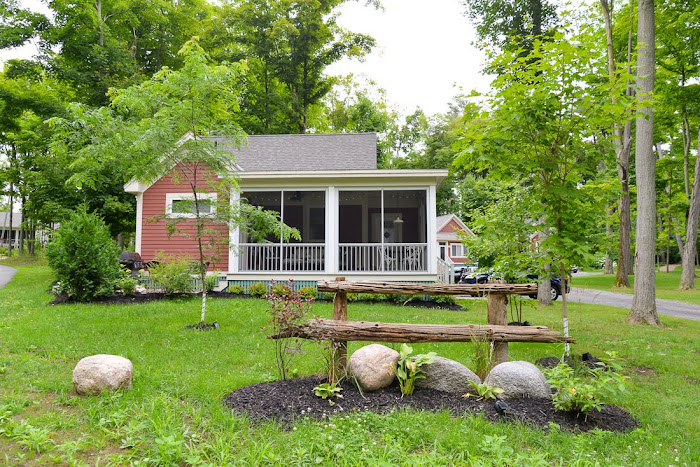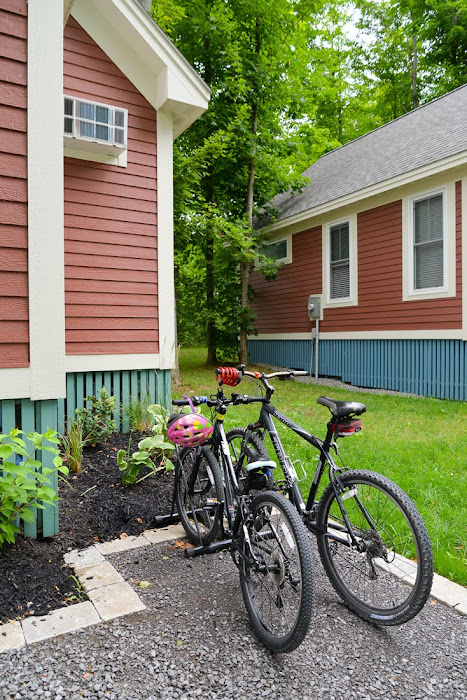News
5 Freeze-Dried Food Items I Recommend You Store
Posted by Shopify API on

One of my secrets to saving money on my grocery bill is this list of 5 freeze-dried food items. I have other ways as well, but these are my five favorite go-to-foods in my pantry. The awesome thing about these is that they come in a can already pre-washed, chopped, diced, or sliced. You gotta love that!
You will never run out of these items you normally pick up at the grocery store if you store some freeze-dried food items like these. If you have a garden, of course, you will use the items you harvest during your growing season.
What I’m talking about is going to the grocery store to pick up some fresh vegetables for that favorite recipe you want to prepare. The more I stay away from shopping, the more money I save. If you see a lady with gray hair walking fast down each aisle to grab and stash stuff in her shopping basket, it may just be me. I’m on a mission when I hit that store with my list, yes, I always have a list. I call it “get in and get out.” Grocery shopping is not my favorite thing to do.
Grocery Shopping
Sometimes people ask me, “how much do you spend on groceries every month?” Here’s the deal, I live 10-12 miles from the nearest grocery store, so I have to take into account gas money, my time, and the amount of money I will spend if I drive there. My secret is going to my pantry instead of the local grocery store. I stock my pantry when the freeze-dried food items go on sale.
What Is Freeze-Dried Food
Let me explain what freeze-dried food is in a nutshell. The first step to freeze-dried food begins with freezing. The second step is the frozen food is placed in a vacuum chamber under low heat. Then the third step starts when the frozen water crystals evaporate directly from ice to vapor which is a process called sublimation.
What’s really nice about freeze-dried food is the fact that it generally lasts longer in your storage stash, depending on the manufacturer. Please always look at the cans and see the shelf-life. You can eat the food directly out of the can, and therefore, it uses a whole lot less fuel, if any, when it comes to meal preparation.
Freeze-dried foods usually have an open shelf-life of 1-2 years. Here again, please look at the #10 can or on the website of the said company for details.
Pros: Lasts 20-25 years, depending on the company where you purchase the food. You can also eat the food directly out of the can. You do not need to slice, chop, or cut the food into bite-size pieces.
Cons: it is more expensive, in most cases. Remember, you do use less fuel to prepare meals using freeze-dried foods.
5 Freeze-Dried Food Items
I’m only spotlighting Thrive Life freeze-dried food today. If you are wondering if I sell it, I do not. My goal is to educate on my website and to learn from my readers as well. So, let’s get started today.
1. Onions/Chopped & Sliced
How Can I Use These
- 1 cup freeze-dried equals 1 cup fresh
- Sliced onions are great on Homemade Pizza
- Stir fry dishes
- Add to hamburger for tacos
- Add to hamburger for spaghetti
- Add to a pot of soup
- Egg omelets
- Creamy Sausage Potato Soup
- These are great for White Chili
- They are fabulous in Breakfast Casseroles
- These are perfect in Homemade Sloppy Joes
- These are perfect to put in Meals In A Jar (short-term storage only)
Thrive Life says, “Add 1/3 cup of water to 1 cup Chopped Onions; let sit covered for 5-10 minutes or until tender. Fresh equivalent, 1 cup dry = 1 cup fresh (nearly one 4 oz. package). “
Shelf-Life
25 years unopened in optimal storage conditions (please do not store them in a hot garage)
2 years when opened (please remove the oxygen absorber and throw it out)
2. Celery
How Can I Use These
- Minestrone/Vegetable Beef Soup
- Chicken Noodle Soup
- Baked Egg Foo Young
- Any casserole that has celery
- Any soup that calls for celery
- Chicken Salad Sandwiches
- Egg Salad
Thrive Life says, “Add ⅓ cup of water to 1 cup of THRIVE Celery. Let sit for 5–10 minutes, then drain any excess water. Fresh equivalent, 1 cup dry = about 2 stalks.”
Celery. Let sit for 5–10 minutes, then drain any excess water. Fresh equivalent, 1 cup dry = about 2 stalks.”
Shelf-Life
25 years unopened in optimal storage conditions (please do not store them in a hot garage)
2 years when opened (please remove the oxygen absorber and throw it out)
3. Red, Yellow, & Green Bell Peppers
How Can I Use These
- Casseroles
- Omelets, yay!! We always have bell peppers ready to go now!!
- Soups
- Homemade Vegetarian Chili
- Chili
- Stir fry
- Pizza
- Rice dishes
- Bean burritos
Thrive Life says, “Add 1/3 cup of water to 1 cup peppers; let sit covered for 3-5 minutes or until tender. Fresh equivalent, 1/3 cup dry = about 1 bell pepper; about 2 green chili peppers.”
Shelf-Life
25 years unopened in optimal storage conditions (please do not store them in a hot garage)
1 year when opened (please remove the oxygen absorber and throw it out)
4. Potato Dices
How Can I Use These
- Mashed potatoes
- Potato Salad
- Creamy soups
- Creamy chowders
Thrive Life says, “Add 4 cups of hot water to 1 cup of potatoes and let sit until tender. Let potatoes soak for 3-5 minutes until tender. Drain water. Fresh equivalent: 1 cup dry = about 1/2 large potato.”
Shelf-Life
25 years unopened in optimal storage conditions (please do not store them in a hot garage)
2 years when opened (please remove the oxygen absorber and throw it out)
5. Green Onions
How Can I Use These
- Add to steamed rice
- Add to steamed brown rice
- These are great with cooked quinoa
- Just sprinkle on top of soups right out of the can
- Sprinkle on top of your 7-layer bean dip (layer beans, sour cream, guacamole, grated cheese, chopped tomatoes, chopped black olives, and green onions right out of the can)
Thrive Life says, “Add 1/4 cup of lukewarm water to 1 cup Green Onions and let sit for 2-3 minutes or until tender. Fresh equivalent: 1 cup dry = 6 1/2 cup stalks.”
Please note, I rarely hydrate them, I use them dry more often than not.
Shelf-Life
25 years unopened in optimal storage conditions (please do not store them in a hot garage)
1 year when opened (please remove the oxygen absorber and throw it out)
Final Word
Here’s the deal, there are many freeze-dried food items we can store, but these are my top 5 that I use almost every day. I never have an onion go bad, moldy bell peppers, green onions never go slimy, and I always have some potatoes ready to use in any recipe. It’s all about cooking from scratch and using food from our pantry. You will love it, I promise. Thanks for prepping, we need to stay on it, my friends. May God bless this world, Linda
How To Survive On Freeze-Dried Food
The post 5 Freeze-Dried Food Items I Recommend You Store appeared first on Food Storage Moms.
How to Protect Your Assets When Working Remotely
Posted by Shopify API on
Remote work comes with numerous benefits. Whether you are a freelancer, run your own business or work for a company with flexible work options, getting out of the office is refreshing and can be great for creativity. But it can also be dangerous—for your data, at least. Fortunately, there are some simple, concrete actions and remote working security tips you can take to protect yourself from hackers, identity thieves, and data loss.
Let’s take a look at some of the best ways you can protect yourself and your assets when working remotely.
Secure Your Network and Protect Your Identity
We all know smart online practices are important, but if you’re running your own business (say, as a freelancer), they become an even higher priority. You’re not just protecting your personal identity now, but your business’ as well. It’s crucial to follow smart security practices and remote working security tips to keep your accounts, finances, and clients safe.
- Secure your home Wi-Fi network. If you work from home, make sure you’re using a password-protected network. Without a password, anyone in range can join the network and potentially see your traffic.

Make sure that you’ve changed your router password, too. Most routers have a default password that’s printed right on the device. This makes it too easy for someone to get the password, log in, and change your Wi-Fi credentials. Instructions for changing your password vary by router model but can usually be found in the manual.
- Follow basic identity protection rules. If you’re running your own business, you’ve likely got a ton of passwords for different software and services. None of those passwords should be the same and you shouldn’t use any password that can be tied back to you personally (like your pet’s name or child’s birthday). Be careful about opening links in emails that you aren’t expecting. And, if you’re on a PC, perform regular scans with antivirus software.
See Also: Protecting Your Network From Cyber Criminals
Prevent Data Loss
Nothing can ruin your day (or week) quite like having hardware failure and losing vital information. Having secure and accessible backups prevents downtime, keeps mission-critical data safe, and ensures you can serve your customers reliably.
- Perform regular backups. Grab yourself an external hard drive and set up your computer up to create regular backups on it. Most drives come with software that can schedule these backups for you. If you’re on a Mac, Time Machine is excellent for this because it automatically keeps multiple recent versions of every document. Windows PCs also come with built-in backup utilities.
- Use cloud storage. Saving files in the cloud serves two purposes. First, it gives you another backup in case your computer or external hard drive fails—backup redundancy is important. Second, it allows you to access those files from any computer, allowing you to be more flexible in your work. You can even access your files from your phone in a pinch. Google Drive, Microsoft OneDrive, and Dropbox are popular cloud storage solutions.
- Keep an off-site backup. Lastly, don’t keep all your backups in one place. Having an off-site backup gives you added security in the event something happens to your hardware. Fires, storms, and theft can all result in the loss of local backups and they’re typically out of your control. Keeping an extra hard drive at another location keeps you covered in the event something catastrophic happens. There are also online solutions.
Keep Company Secrets Safe
Trade secrets are a hot commodity and protecting them is critical to long-term business success. Following a few simple remote working security tips can go a long way in keeping your business’ sensitive data in the right hands.
- Use a VPN. A VPN (virtual private network) is a special network that encrypts traffic and disguises its source, keeping your data private. Without a VPN, even if your network is secure, your ISP and possibly others can see your internet traffic. A VPN allows you to work safely from anywhere without worry, even on public Wi-Fi.

- Install a privacy screen on your laptop. If you do a lot of working in public places like cafes or coffee shops, keeping your screen concealed from prying eyes is important. Privacy screens are like screen protectors for your laptop but with a twist. If you’re viewing from an angle, they obscure the screen’s contents so passersby can’t read your sensitive information. Some laptops (especially business models) come with this as a built-in option, meaning no extra filter required. You can even get them for phones and tablets.
- Encrypt your data. In the event that your computer or backup drives are stolen, encryption helps ensure that the thieves can’t access the critical information stored on them. Windows and Mac computers both come with tools to encrypt both the computer itself and any backup drives you connect to it. Remember to use a strong password!
See Also: How to Set Up a VPN
Technology changes rapidly in today’s world and cybercriminals are often ahead of the curve. Working remotely only adds to the complexity of information security. Keeping up with basic remote working security tips can help you keep your assets protected.
The post How to Protect Your Assets When Working Remotely appeared first on Dumb Little Man.
How to Protect Your Assets When Working Remotely
Posted by Shopify API on
Remote work comes with numerous benefits. Whether you are a freelancer, run your own business or work for a company with flexible work options, getting out of the office is refreshing and can be great for creativity. But it can also be dangerous—for your data, at least. Fortunately, there are some simple, concrete actions and remote working security tips you can take to protect yourself from hackers, identity thieves, and data loss.
Let’s take a look at some of the best ways you can protect yourself and your assets when working remotely.
Secure Your Network and Protect Your Identity
We all know smart online practices are important, but if you’re running your own business (say, as a freelancer), they become an even higher priority. You’re not just protecting your personal identity now, but your business’ as well. It’s crucial to follow smart security practices and remote working security tips to keep your accounts, finances, and clients safe.
- Secure your home Wi-Fi network. If you work from home, make sure you’re using a password-protected network. Without a password, anyone in range can join the network and potentially see your traffic.

Make sure that you’ve changed your router password, too. Most routers have a default password that’s printed right on the device. This makes it too easy for someone to get the password, log in, and change your Wi-Fi credentials. Instructions for changing your password vary by router model but can usually be found in the manual.
- Follow basic identity protection rules. If you’re running your own business, you’ve likely got a ton of passwords for different software and services. None of those passwords should be the same and you shouldn’t use any password that can be tied back to you personally (like your pet’s name or child’s birthday). Be careful about opening links in emails that you aren’t expecting. And, if you’re on a PC, perform regular scans with antivirus software.
See Also: Protecting Your Network From Cyber Criminals
Prevent Data Loss
Nothing can ruin your day (or week) quite like having hardware failure and losing vital information. Having secure and accessible backups prevents downtime, keeps mission-critical data safe, and ensures you can serve your customers reliably.
- Perform regular backups. Grab yourself an external hard drive and set up your computer up to create regular backups on it. Most drives come with software that can schedule these backups for you. If you’re on a Mac, Time Machine is excellent for this because it automatically keeps multiple recent versions of every document. Windows PCs also come with built-in backup utilities.
- Use cloud storage. Saving files in the cloud serves two purposes. First, it gives you another backup in case your computer or external hard drive fails—backup redundancy is important. Second, it allows you to access those files from any computer, allowing you to be more flexible in your work. You can even access your files from your phone in a pinch. Google Drive, Microsoft OneDrive, and Dropbox are popular cloud storage solutions.
- Keep an off-site backup. Lastly, don’t keep all your backups in one place. Having an off-site backup gives you added security in the event something happens to your hardware. Fires, storms, and theft can all result in the loss of local backups and they’re typically out of your control. Keeping an extra hard drive at another location keeps you covered in the event something catastrophic happens. There are also online solutions.
Keep Company Secrets Safe
Trade secrets are a hot commodity and protecting them is critical to long-term business success. Following a few simple remote working security tips can go a long way in keeping your business’ sensitive data in the right hands.
- Use a VPN. A VPN (virtual private network) is a special network that encrypts traffic and disguises its source, keeping your data private. Without a VPN, even if your network is secure, your ISP and possibly others can see your internet traffic. A VPN allows you to work safely from anywhere without worry, even on public Wi-Fi.

- Install a privacy screen on your laptop. If you do a lot of working in public places like cafes or coffee shops, keeping your screen concealed from prying eyes is important. Privacy screens are like screen protectors for your laptop but with a twist. If you’re viewing from an angle, they obscure the screen’s contents so passersby can’t read your sensitive information. Some laptops (especially business models) come with this as a built-in option, meaning no extra filter required. You can even get them for phones and tablets.
- Encrypt your data. In the event that your computer or backup drives are stolen, encryption helps ensure that the thieves can’t access the critical information stored on them. Windows and Mac computers both come with tools to encrypt both the computer itself and any backup drives you connect to it. Remember to use a strong password!
See Also: How to Set Up a VPN
Technology changes rapidly in today’s world and cybercriminals are often ahead of the curve. Working remotely only adds to the complexity of information security. Keeping up with basic remote working security tips can help you keep your assets protected.
The post How to Protect Your Assets When Working Remotely appeared first on Dumb Little Man.
Professional Landscaping For Our Prince Edward County Cottage
Posted by Shopify API on
We finally had our landscaping done at our cottage and I thought I would give you a look around. Admittedly Sean and I have no skills when it comes to planning a garden so we decided to hire a professional landscaper for this job. We waited a few years before deciding what to do with this space which gave us time to really hone in on our needs and be able to communicate those to a pro and I'm pleased to say our dream has become a reality. Come, have a look around!

Why should you hire a professional landscaper?
Much like an architect and the skills they bring to designing a house, a landscaper can help you with building your ideal garden. A landscaper can bring design ideas around plant types, what varieties work well together and are suited to your conditions. They are also problem solvers and know how to deal with the challenges different landscapes present. Lastly, they bring expertise and speed of construction. Sean and I could have fumbled our way through and attempted to plant this garden ourselves (Sean worked a few summers laying patios and walkways so there's that!), but it most certainly would have taken all our summer weekends to do it ;)Since this is a three season cottage and we're not here regularly to water plants during the week, we had a few requirements:
- The plants should be hardy and suited to both infrequent watering in the summer and very cold winters.
- We wanted the plants and the hardscape to complement the look of the cottage. We like symmetry and formality and orderly pathways and borders. The garden should suit the country setting, but we're not the wild English garden type ;)
- And we wanted a little privacy. Our porch faces the street (I love seeing people and kids on bikes go by) so its exposed but we wanted a small area to do our barbequing. Additionally, the plants shouldn't get so high that they would block the views from our porch.

The skirting around the base of the cottage creates a nice, clean backdrop for the plantings. The mulch keeps things looking unified and helps retain moisture in the soil. We've kept one small area open so we can still access our under-cottage storage.

The driveway connects to this pretty front landing. One thing we did specify was this 'new' brick that looks like old reclaimed brick. I've long had a love for walkways laid in a herringbone brick pattern. Our old front walkway had a similar scheme with herringbone field and soldier course border. The red tone of this brick works nicely with our painted red cottage and adds to that country feel.
One trick Jason had was to lay the border pavers upside down. The top of the pavers had a rough texture and he knew we'd much prefer the cleaner back side so he just flipped them ever. So smart! On the corner, I've placed an extra urn that we weren't using at our city house. I picked up this planter at a local nursery and yes, I do haul the planter back and forth when we go home. Who am I and when did I become this plant-loving lady that hauls her petunias around?! Lol!

We wanted a simple perimeter of plants around the cottage. We decided on hydrangeas on the corners mixed with spirea. The hydrangeas will bloom white (next summer!) and the spirea have pretty purple flowers in the summer and in fall, the leaves will turn a vibrant orange. These plants are pretty low maintenance and don't need much up keep which makes them perfect for this property.

As we're on the corner, we've got a wide expanse of yard. We asked Jason to create a corner garden as well. The only stipulations were there needed to be a fence and some rocks and we're really pleased with what he came up with. The fence boards are about 100 years old, from Jason's old family farm and I love their character. I'm not sure what all the plants are (there's a hydrangea and some hostas) but I look forward to this display growing in nicely over time. We've also had a few other trees planted on our lot over the years which will bring lovely shade in a decade or two.

And tucked off our porch is this sweet little sitting area. Repeating the brick and border pattern from the front walkway helps tie everything together. We didn't want anything too grand, just a small spot to put bbq and a couple of chairs to sit as you wait for the steaks and burgers to cook. We enjoy eating on our screened porch so didn't need this back patio to be larger than it's 8x10 footprint.
To create some privacy, this patio is surrounded by a few tall cedars, a large lilac bush, and more of the hydrangeas.

I love how finished and permanent the new landscaping makes our summer home feels. We're completely thrilled with Four Seasons Landscaping PEC and I highly recommend them if you need work done in Prince Edward County!
I can't wait to see how the garden changes over the seasons and over the years. The cottage interior looks great so it's nice to have the exterior looking good as well. I hope you've enjoyed this garden tour!
Professional Landscaping For Our Prince Edward County Cottage
Posted by Shopify API on
We finally had our landscaping done at our cottage and I thought I would give you a look around. Admittedly Sean and I have no skills when it comes to planning a garden so we decided to hire a professional landscaper for this job. We waited a few years before deciding what to do with this space which gave us time to really hone in on our needs and be able to communicate those to a pro and I'm pleased to say our dream has become a reality. Come, have a look around!

Why should you hire a professional landscaper?
Much like an architect and the skills they bring to designing a house, a landscaper can help you with building your ideal garden. A landscaper can bring design ideas around plant types, what varieties work well together and are suited to your conditions. They are also problem solvers and know how to deal with the challenges different landscapes present. Lastly, they bring expertise and speed of construction. Sean and I could have fumbled our way through and attempted to plant this garden ourselves (Sean worked a few summers laying patios and walkways so there's that!), but it most certainly would have taken all our summer weekends to do it ;)Since this is a three season cottage and we're not here regularly to water plants during the week, we had a few requirements:
- The plants should be hardy and suited to both infrequent watering in the summer and very cold winters.
- We wanted the plants and the hardscape to complement the look of the cottage. We like symmetry and formality and orderly pathways and borders. The garden should suit the country setting, but we're not the wild English garden type ;)
- And we wanted a little privacy. Our porch faces the street (I love seeing people and kids on bikes go by) so its exposed but we wanted a small area to do our barbequing. Additionally, the plants shouldn't get so high that they would block the views from our porch.

The skirting around the base of the cottage creates a nice, clean backdrop for the plantings. The mulch keeps things looking unified and helps retain moisture in the soil. We've kept one small area open so we can still access our under-cottage storage.

The driveway connects to this pretty front landing. One thing we did specify was this 'new' brick that looks like old reclaimed brick. I've long had a love for walkways laid in a herringbone brick pattern. Our old front walkway had a similar scheme with herringbone field and soldier course border. The red tone of this brick works nicely with our painted red cottage and adds to that country feel.
One trick Jason had was to lay the border pavers upside down. The top of the pavers had a rough texture and he knew we'd much prefer the cleaner back side so he just flipped them ever. So smart! On the corner, I've placed an extra urn that we weren't using at our city house. I picked up this planter at a local nursery and yes, I do haul the planter back and forth when we go home. Who am I and when did I become this plant-loving lady that hauls her petunias around?! Lol!

We wanted a simple perimeter of plants around the cottage. We decided on hydrangeas on the corners mixed with spirea. The hydrangeas will bloom white (next summer!) and the spirea have pretty purple flowers in the summer and in fall, the leaves will turn a vibrant orange. These plants are pretty low maintenance and don't need much up keep which makes them perfect for this property.

As we're on the corner, we've got a wide expanse of yard. We asked Jason to create a corner garden as well. The only stipulations were there needed to be a fence and some rocks and we're really pleased with what he came up with. The fence boards are about 100 years old, from Jason's old family farm and I love their character. I'm not sure what all the plants are (there's a hydrangea and some hostas) but I look forward to this display growing in nicely over time. We've also had a few other trees planted on our lot over the years which will bring lovely shade in a decade or two.

And tucked off our porch is this sweet little sitting area. Repeating the brick and border pattern from the front walkway helps tie everything together. We didn't want anything too grand, just a small spot to put bbq and a couple of chairs to sit as you wait for the steaks and burgers to cook. We enjoy eating on our screened porch so didn't need this back patio to be larger than it's 8x10 footprint.
To create some privacy, this patio is surrounded by a few tall cedars, a large lilac bush, and more of the hydrangeas.

I love how finished and permanent the new landscaping makes our summer home feels. We're completely thrilled with Four Seasons Landscaping PEC and I highly recommend them if you need work done in Prince Edward County!
I can't wait to see how the garden changes over the seasons and over the years. The cottage interior looks great so it's nice to have the exterior looking good as well. I hope you've enjoyed this garden tour!







